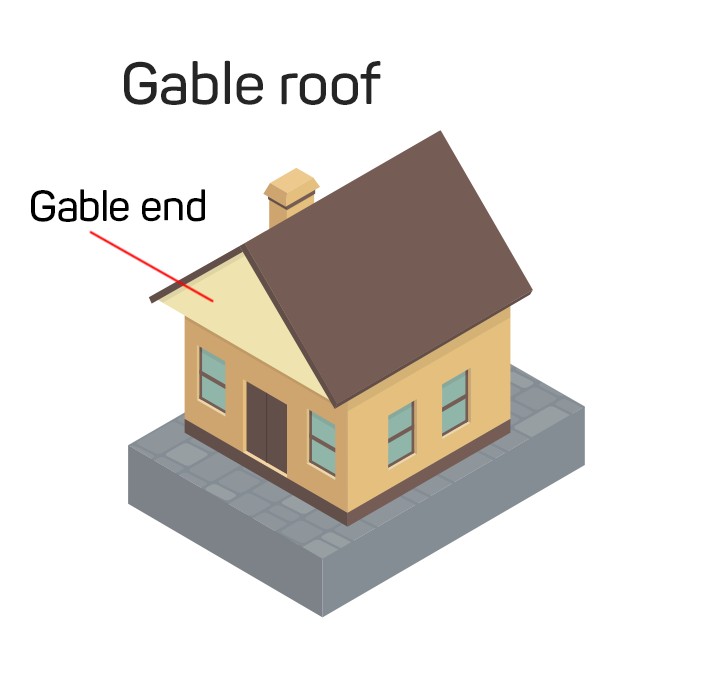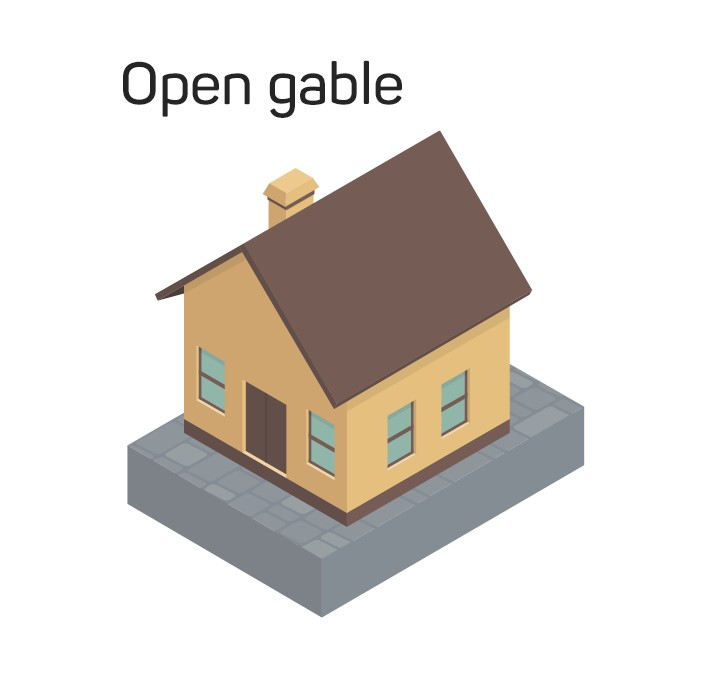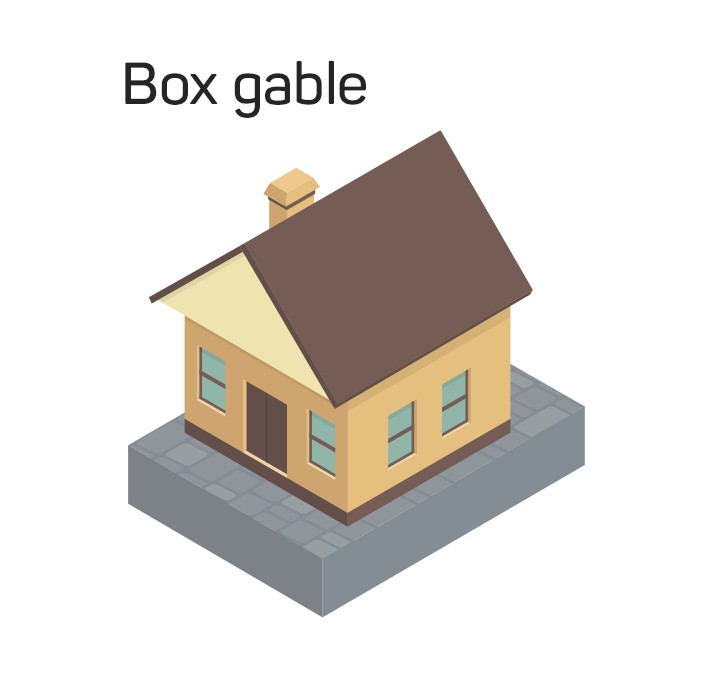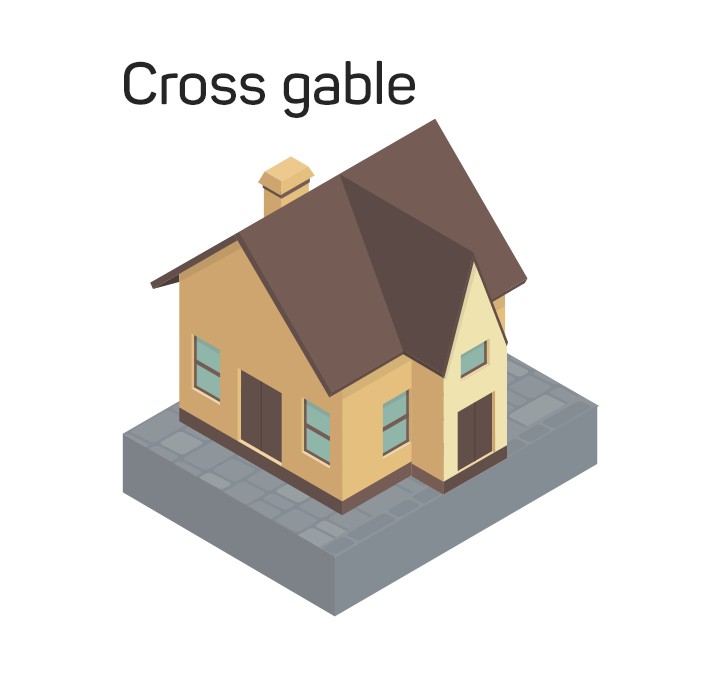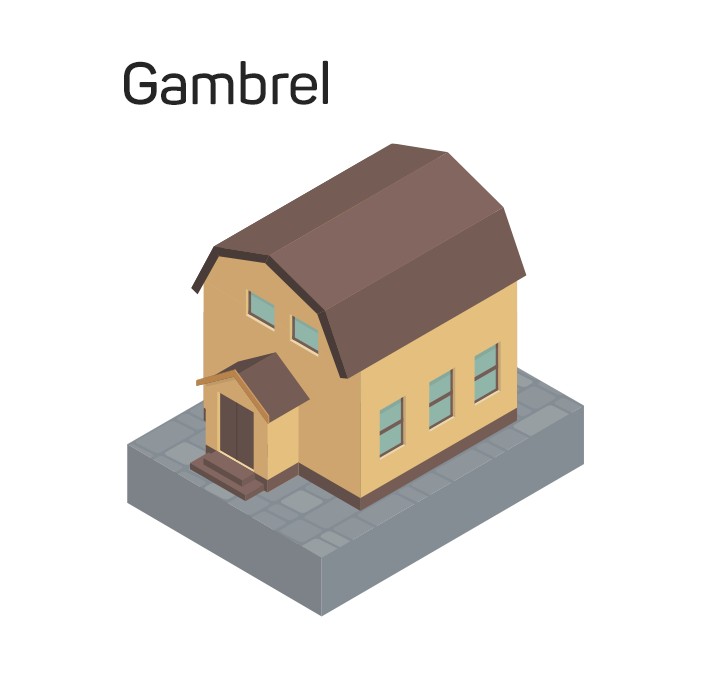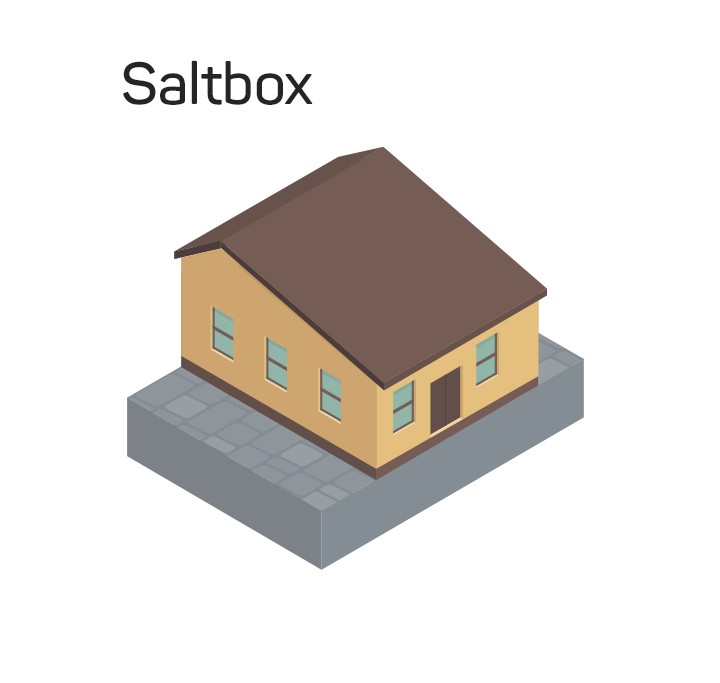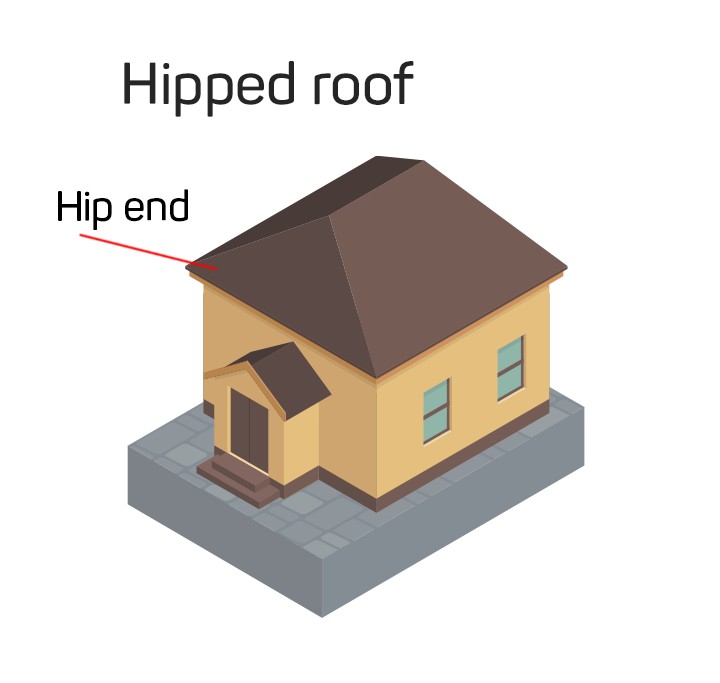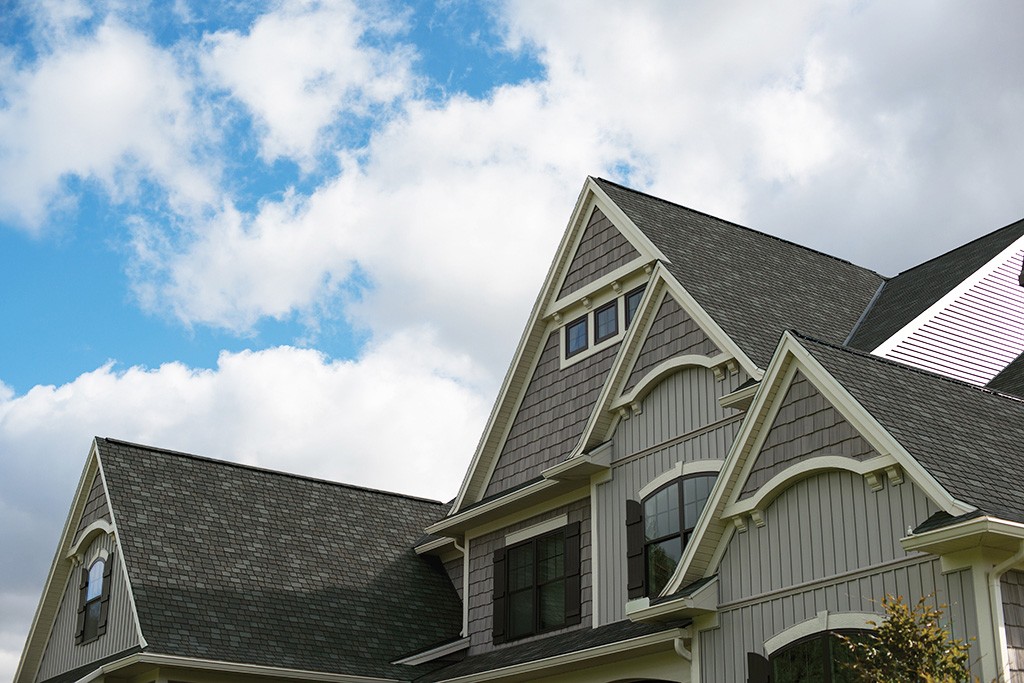What Is A Gable Roof? It’s a classic roofing design, and at WHAT.EDU.VN, we understand you’re looking for quick, reliable answers. Gable roofs are characterized by their triangular shape, offering both aesthetic appeal and functional benefits. Whether you’re a student tackling an assignment, a homeowner planning renovations, or simply curious about architectural styles, understanding gable roofs is essential. Let WHAT.EDU.VN provide the solution for you and help you explore the world of roof designs while expanding your architectural vocabulary.
1. Understanding the Basics of a Gable Roof
A gable roof is easily identifiable by its triangular shape formed at the end of the roof. This design is one of the most common in residential architecture, providing a simple yet effective way to cover and protect a building. The gable itself is the vertical, triangular portion of the wall between the sloping roof edges.
1.1. Defining the Gable Roof
The core characteristic of a gable roof is its A-frame shape. Two roof sections slope upwards and meet at a ridge, creating a triangle (the gable) beneath. This design is not only visually appealing but also practical in many climates.
1.2. Key Features of Gable Roofs
Gable roofs are defined by several key features:
- Triangular Shape: The most noticeable feature, providing a classic look.
- Ridge: The horizontal line where the two roof planes meet at the top.
- Gable End: The vertical triangular wall beneath the roof slopes.
- Simplicity: Easy to design and construct, making it a cost-effective option.
1.3. Why Gable Roofs Are So Popular
Gable roofs have maintained their popularity for several reasons:
- Cost-Effectiveness: Simpler designs often translate to lower construction costs.
- Ease of Construction: Builders are familiar with the design, speeding up construction.
- Effective Water Runoff: The sloping design effectively sheds rain and snow.
- Ventilation: Provides ample space for attic ventilation, reducing moisture buildup.
2. Exploring Different Types of Gable Roofs
While the basic concept remains the same, gable roofs come in various styles, each offering unique aesthetic and functional benefits. Understanding these variations can help you choose the best option for your specific needs.
2.1. Open Gable Roof
The most common type, an open gable roof features a simple triangular gable end made of the same siding material as the rest of the house. This design is straightforward and cost-effective.
2.2. Box Gable Roof
A box gable roof extends the gable slightly beyond the wall, creating an enclosed “box” appearance. This adds architectural interest and can provide additional protection from the elements.
2.3. Cross Gable Roof
A cross gable roof is formed when two gable roof sections intersect at a right angle. This design is common in homes with multiple wings or additions, adding complexity and visual appeal.
2.4. Gambrel Roof
A gambrel roof is a variation of the gable roof with two different slopes on each side. The lower slope is steeper than the upper slope, creating a distinctive barn-like appearance.
2.5. Saltbox Roof
A saltbox roof is an asymmetrical gable roof where one side extends further than the other. This design creates a longer, sloping roof on one side, providing more interior space.
3. Advantages and Disadvantages of Gable Roofs
Like any roofing style, gable roofs have their own set of pros and cons. Weighing these factors is crucial in determining whether a gable roof is the right choice for your project.
3.1. Advantages of Gable Roofs
- Cost-Effective: Generally less expensive to build than more complex designs.
- Simple Design: Easy to construct and maintain.
- Good Ventilation: Provides ample attic space for ventilation.
- Effective Water Runoff: Sloping design efficiently sheds water and snow.
- Aesthetic Appeal: Classic and versatile, fitting various architectural styles.
- More Attic Space: Gable roofs provide a larger space for your attic.
3.2. Disadvantages of Gable Roofs
- Wind Resistance: Can be vulnerable to high winds if not properly braced.
- Gable Overhang: Gable overhangs can be damaged by strong winds.
- Design Limitations: May not be suitable for all architectural styles.
- Maintenance: Requires regular inspection and maintenance to prevent issues.
4. Comparing Gable Roofs to Other Roof Styles
Understanding how gable roofs stack up against other popular roofing styles can help you make an informed decision based on your specific needs and preferences.
4.1. Gable vs. Hip Roof
Hip roofs have slopes on all four sides, while gable roofs have slopes on two sides with gables at the ends. Here’s a quick comparison:
- Wind Resistance: Hip roofs generally perform better in high winds.
- Cost: Gable roofs are typically less expensive.
- Complexity: Hip roofs are more complex to design and build.
- Aesthetic: Hip roofs offer a more modern, streamlined look.
- Snow Performance: Gable roofs are better at shedding snow.
4.2. Gable vs. Flat Roof
Flat roofs have a minimal slope, while gable roofs have a distinct triangular shape. Key differences include:
- Water Runoff: Gable roofs offer superior water runoff.
- Cost: Flat roofs are often less expensive initially but may have higher maintenance costs.
- Space: Flat roofs can provide usable rooftop space.
- Aesthetic: Gable roofs offer a more traditional aesthetic.
- Maintenance: Flat roofs require more frequent maintenance.
4.3. Gable vs. Shed Roof
Shed roofs have a single sloping plane, while gable roofs have two slopes meeting at a ridge. Here’s a comparison:
- Simplicity: Shed roofs are simpler to design and build.
- Cost: Shed roofs are generally less expensive.
- Water Runoff: Gable roofs offer better water runoff in most situations.
- Aesthetic: Gable roofs provide a more traditional, symmetrical look.
- Attic Space: Gable roofs offer more attic space.
5. Factors to Consider When Choosing a Gable Roof
Several factors should influence your decision when considering a gable roof. These include climate, architectural style, budget, and personal preferences.
5.1. Climate Considerations
- Rainfall: Gable roofs excel at shedding rainwater, making them suitable for rainy climates.
- Snowfall: The steep slopes can effectively shed snow, reducing the risk of roof damage.
- Wind: In high-wind areas, proper bracing and orientation are essential to prevent wind damage.
- Temperature: Good ventilation in the attic can help regulate temperature, reducing energy costs.
5.2. Architectural Style
Gable roofs are versatile and can complement various architectural styles, including:
- Colonial: Gable roofs are a hallmark of colonial-style homes.
- Cape Cod: Simple gable roofs are common in Cape Cod architecture.
- Victorian: Cross-gabled and ornamented gable roofs are often seen in Victorian homes.
- Craftsman: Gable roofs with exposed rafters and decorative brackets fit well with Craftsman designs.
5.3. Budget Considerations
- Initial Cost: Gable roofs are generally more affordable than more complex designs.
- Maintenance Costs: Regular inspections and maintenance can help prevent costly repairs.
- Material Choices: The type of roofing material can significantly impact the overall cost.
5.4. Personal Preferences
- Aesthetic Appeal: Choose a gable roof style that complements your personal taste and the overall look of your home.
- Functionality: Consider how the roof design will impact attic space, ventilation, and overall functionality.
- Resale Value: A well-maintained and aesthetically pleasing roof can enhance your home’s resale value.
6. Common Materials Used for Gable Roofs
The choice of roofing material can significantly impact the performance, longevity, and aesthetic of a gable roof. Here are some common options:
6.1. Asphalt Shingles
- Cost-Effective: Asphalt shingles are one of the most affordable roofing materials.
- Versatile: Available in various colors and styles to match different architectural designs.
- Durable: Can last 20-30 years with proper maintenance.
- Easy to Install: Relatively easy to install, reducing labor costs.
6.2. Metal Roofing
- Long-Lasting: Metal roofs can last 50 years or more.
- Durable: Resistant to fire, wind, and impact.
- Energy-Efficient: Reflects sunlight, reducing cooling costs.
- Environmentally Friendly: Recyclable and sustainable.
6.3. Tile Roofing
- Aesthetic Appeal: Provides a classic, elegant look.
- Durable: Can last 50-100 years.
- Fire-Resistant: Offers excellent fire protection.
- Heavy: Requires a strong roof structure to support the weight.
6.4. Wood Shingles and Shakes
- Natural Look: Provides a rustic, natural aesthetic.
- Environmentally Friendly: Made from renewable resources.
- Insulating: Offers good insulation properties.
- Maintenance: Requires regular maintenance to prevent rot and insect damage.
7. Maintenance Tips for Gable Roofs
Proper maintenance is crucial to prolong the life of a gable roof and prevent costly repairs. Here are some essential tips:
7.1. Regular Inspections
- Frequency: Inspect your roof at least twice a year, in the spring and fall.
- Check for: Missing, damaged, or curling shingles, as well as signs of leaks or water damage.
- Professional Inspection: Consider hiring a professional roofing contractor for a thorough inspection.
7.2. Cleaning and Debris Removal
- Remove Debris: Clear leaves, branches, and other debris from the roof and gutters.
- Moss and Algae: Remove moss and algae growth to prevent damage to the roofing material.
- Gentle Cleaning: Use a soft brush or low-pressure washer to clean the roof surface.
7.3. Gutter Maintenance
- Clean Gutters: Regularly clean gutters to ensure proper water flow.
- Check for Damage: Inspect gutters for leaks, cracks, and sagging.
- Downspouts: Ensure downspouts are properly directed away from the foundation.
7.4. Addressing Issues Promptly
- Repair Damage: Repair any damaged or missing shingles as soon as possible.
- Fix Leaks: Address leaks immediately to prevent water damage to the interior of your home.
- Professional Help: Hire a qualified roofing contractor for any major repairs or replacements.
8. Enhancing Gable Roof Aesthetics
Gable roofs can be enhanced with various architectural details and decorative elements to improve their aesthetic appeal.
8.1. Gable Brackets
- Decorative Elements: Gable brackets add visual interest and support to the gable end.
- Styles: Available in various styles, from simple to ornate, to match different architectural designs.
- Materials: Made from wood, metal, or composite materials.
8.2. Pediments
- Triangular Ornamentation: Pediments are triangular or curved decorative elements placed above windows or doors.
- Classical Look: Add a touch of classical elegance to the gable end.
- Materials: Made from wood, stone, or composite materials.
8.3. Decorative Shingles
- Unique Patterns: Decorative shingles can be used to create unique patterns and designs on the gable end.
- Visual Interest: Add visual interest and personality to the roof.
- Materials: Available in various materials and colors.
8.4. Dormers
- Functional and Aesthetic: Dormers add both functional space and aesthetic appeal to the attic.
- Types: Available in various styles, including gable dormers, shed dormers, and hip dormers.
- Natural Light: Provide additional natural light and ventilation to the attic.
9. Gable Roofs in Different Architectural Styles
The versatility of gable roofs allows them to be incorporated into a wide range of architectural styles, each with its own unique characteristics.
9.1. Colonial Style
- Simple Gable Roofs: Colonial homes typically feature simple, symmetrical gable roofs with a moderate slope.
- Symmetrical Design: Emphasizes symmetry and balance in the overall design.
- Traditional Materials: Often uses traditional materials such as wood shingles or clapboard siding.
9.2. Victorian Style
- Cross-Gabled Roofs: Victorian homes often feature complex cross-gabled roofs with steep slopes and intricate detailing.
- Ornamentation: Emphasizes ornamentation and decorative elements, such as gable brackets and pediments.
- Bright Colors: Often incorporates bright, bold colors to enhance the visual appeal.
9.3. Cape Cod Style
- Low-Pitched Gable Roofs: Cape Cod homes typically have low-pitched gable roofs with minimal overhangs.
- Simple Design: Emphasizes simplicity and functionality in the overall design.
- Dormers: Often includes dormers to add space and natural light to the attic.
9.4. Craftsman Style
- Gable Roofs with Exposed Rafters: Craftsman homes often feature gable roofs with exposed rafters and decorative brackets.
- Natural Materials: Emphasizes the use of natural materials such as wood and stone.
- Porches: Often includes wide, inviting porches with gable roofs.
10. Frequently Asked Questions About Gable Roofs
To provide you with a comprehensive understanding of gable roofs, here are some frequently asked questions:
| Question | Answer |
|---|---|
| What is the ideal pitch for a gable roof? | The ideal pitch depends on the climate and roofing material. A steeper pitch is better for snowy areas, while a lower pitch may be suitable for warmer climates. |
| How do I prevent wind damage to my gable roof? | Ensure proper bracing, use high-quality roofing materials, and keep overhangs to a minimum. |
| Can I install solar panels on a gable roof? | Yes, gable roofs are well-suited for solar panel installation due to their large, unobstructed surface area. |
| How do I ventilate my gable roof? | Use gable vents, ridge vents, and soffit vents to ensure proper attic ventilation. |
| What are the signs of a failing gable roof? | Look for missing, damaged, or curling shingles, as well as signs of leaks, water damage, or sagging. |
| Is a gable roof suitable for a DIY project? | Simple gable roof repairs may be suitable for DIY, but major repairs or replacements should be handled by a professional roofing contractor. |
| How much does it cost to replace a gable roof? | The cost varies depending on the size of the roof, the roofing material, and labor costs. Get quotes from multiple contractors for an accurate estimate. |
| What are the benefits of a raised gable roof? | A raised gable roof provides additional headroom and living space in the attic. |
| How does a gable roof affect home insurance costs? | A well-maintained gable roof can help lower home insurance costs by reducing the risk of damage from wind, rain, and snow. |
| What is the lifespan of a gable roof? | The lifespan depends on the roofing material and maintenance. Asphalt shingles typically last 20-30 years, while metal and tile roofs can last 50 years or more. |
| What maintenance is required for a gable roof? | Regular inspections, debris removal, and prompt repairs of any damage. |
| Can I add a room in the attic of a gable roof? | Yes, as long as there is adequate headroom and structural support. Consult with a contractor or architect to determine feasibility and code compliance. |
| What are some eco-friendly roofing options? | Recycled metal roofing, solar shingles, and green roofs with vegetation. |
| What are some architectural styles for gable roofs? | Colonial, Victorian, Cape Cod, and Craftsman are all styles that can take advantage of gable roofs. |
| What are some energy-efficient ventilation methods? | Ridge vents, soffit vents, and attic fans can help circulate air and reduce energy costs. |
Do you still have questions about gable roofs? At WHAT.EDU.VN, we are here to provide you with the answers you need. Don’t hesitate to ask your questions on our platform and get the support you deserve. Our community of experts is ready to help you understand gable roofs and all other topics.
11. Conclusion: Is a Gable Roof Right for You?
Choosing the right roof style is a significant decision that impacts both the aesthetic and functional aspects of your home. Gable roofs offer a classic, cost-effective, and versatile option that can be adapted to various architectural styles and climates.
By understanding the different types of gable roofs, their advantages and disadvantages, and the factors to consider when making your decision, you can confidently choose a roof that meets your needs and enhances the beauty and value of your home.
Whether you are building a new home, replacing an existing roof, or simply exploring different roofing options, a gable roof is a reliable and attractive choice that can provide years of protection and enjoyment.
Ready to learn more and get your questions answered? Visit WHAT.EDU.VN today.
Are you struggling to find quick, reliable answers to your questions? Do you feel overwhelmed by the complexities of home improvement, architectural styles, or any other topic? You’re not alone! Many people face the challenge of finding accurate information and expert advice without spending a fortune.
At WHAT.EDU.VN, we understand your struggles and offer a simple, effective solution: a free platform where you can ask any question and receive prompt, knowledgeable answers. Whether you’re a student, a professional, or simply a curious individual, WHAT.EDU.VN is here to support you.
Here’s how WHAT.EDU.VN can help:
- Free Question-Answering Service: Ask any question on any topic and receive answers from our community of experts.
- Quick and Reliable Information: Get the information you need when you need it, without wasting time searching through endless websites.
- Expert Advice: Connect with knowledgeable professionals who can provide valuable insights and guidance.
- Easy-to-Use Platform: Our user-friendly website makes it simple to ask questions and find answers.
- Community Support: Join a community of learners and experts who are passionate about sharing knowledge and helping others.
Don’t let your questions go unanswered. Visit WHAT.EDU.VN today and experience the convenience and value of our free question-answering service.
Contact Us:
- Address: 888 Question City Plaza, Seattle, WA 98101, United States
- WhatsApp: +1 (206) 555-7890
- Website: WHAT.EDU.VN
Ask your question now and let what.edu.vn provide you with the answers you need!
